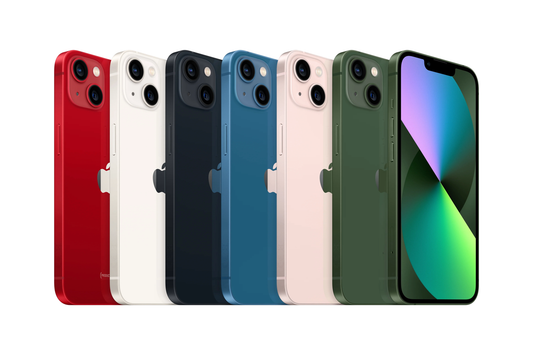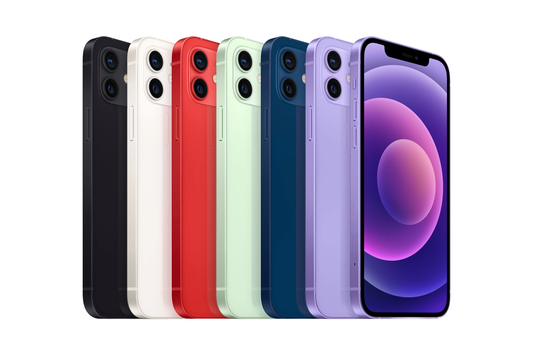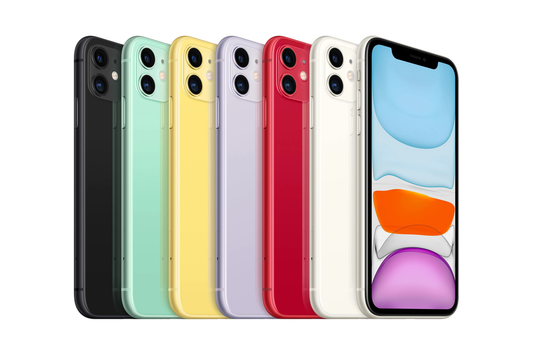Before we start
It’s a nightmare scenario: your iPhone battery is getting low, so you plug it in, and… nothing. Your iPhone won’t charge! Now you’re in a race against the clock to get the phone charging again before it dies, like trying to find a gas station when your car’s running on fumes.
But fear not – we’re here to help. iPhones won’t charge for a few common reasons, and thankfully, most of them are totally fixable. In this article, we’ll cover all the potential issues that could be behind your iPhone not charging, what to do about them, and when you need to get help from an expert.
Why is my iPhone not charging?
There are three basic reasons your iPhone might not charge: hardware problems within your iPhone, a software bug, or power source issues (like with your charger or the wall outlet).
The most common causes for an iPhone that won’t charge are using a faulty charging cable or adapter, or a charging port with liquid or debris inside. Thankfully, these are also by far the easiest issues to fix!
Read on for in-depth coverage on identifying the root of the problem and how to fix things once you know what’s going on.
Check the charging cable, adapter and power source
Raise your hand if you’ve ever desperately tried to charge your phone with a random cable or block you found in a drawer… 🙋If the cable or block you’re using is old, abused or frayed, or was purchased at a gas station, it’s highly likely there’s nothing wrong with your iPhone at all, and you just need to switch up your charging source.
Don’t have another charger on hand? Here’s what to try:
- If you have another iPhone or iPad around, try charging it with the same cable and block. If the second device doesn’t charge, the issue is with the charger. (For maximum reliability, we recommend replacing it with an official Apple cable and block or a trusted third-party brand such as mophie, Anker or Belkin.)
- Third-party wall adapter blocks often die randomly. Plug the device directly into a USB port instead, or switch blocks if you have another one. Here's our top Amazon pick with MFi (Made For iPhone) certification.
- The wall socket or USB port you’re plugged into could be at fault. Try moving to another outlet or USB port. FYI, older laptops have low-powered USB ports that won’t charge iPhones effectively, so if that’s what you’re using, look for a more modern device to plug into instead.
Clean the iPhone charging port
If there’s dirt or debris in your iPhone’s charging port, it won’t be able to establish a connection with your charger, and the juice will not flow. The older Lightning charging ports are especially susceptible to lint buildup.
Carefully insert a wooden or plastic toothpick into the charging port and scrape it around to see if lint starts falling out. (It’s gross, but oddly satisfying?) We clean phones’ charging ports this way before shipping them, but sometimes we might not get it all, or it could have become clogged after you received it.
Check out this video we made for a visual guide to help you clean your charging port.
Update to the latest iOS
Your phone has software that decides if the iPhone will try to charge or not when plugged into a power source. And where there’s software, there can be a bug. Updating to the newest iOS version will get you the latest round of bug fixes, so it’s worth a try to see if your issue was already patched.
To do this, go to Settings > General > Software Update. Once the update is complete, hopefully your charging issues will be resolved.
Restart or force restart your iPhone
“Have you tried turning it off and on again?” It’s a cliché for a reason – doing a restart often mysteriously fixes minor annoyances with a device.
We wrote a whole article on when and how to restart your iPhone. It talks about the iPhone 13, but the same advice applies to most iPhones. If you prefer to see a video guide, we’ve got you covered here.
Turn off Optimized Battery Charging
With the release of iOS 13 in 2019, Apple launched Optimized Battery Charging. Since it’s not good for phone batteries to spend too much time at 100% charge, this feature pauses your iPhone charging at 80%, then resumes when a prediction algorithm thinks you’re going to unplug your phone soon.
This helps protect the long-term health of your battery, but if you’re not familiar with the feature, it could seem that your phone has a charging issue. If it’s annoying you or you need to get to 100% right away, navigate to Settings > Battery > Battery Health & Charging and turn Optimized Battery Charging Off.
In rare cases, Optimized Battery Charging may malfunction or misinterpret your routine, causing it to delay charging when it shouldn’t. In that case, turning off the feature or performing a software update should get things going again.
Check for water damage
As any Pokemon trainer knows, water and electricity are natural enemies. If there’s liquid inside your charging port, or it’s been damaged by liquid in the past, your phone may not charge.
If you’re using a newer iPhone (iPhone XS/XS Max/XR or later), your phone will warn you if there’s liquid detected in the charging port, and prevent charging until it’s dry. It may be frustrating, but we strongly recommend holding off on charging until the warning goes away. Circumventing it could damage your phone.
Until then, place the phone in a well-ventilated spot to allow any water to evaporate. (And save the rice for dinner – putting the phone in rice doesn’t help and can actually hurt.)
Even if you don’t see the “liquid detected” warning, your phone could have damage from previous liquid exposure, which can often grow worse over time and cause ongoing issues. To check if your phone has liquid damage, follow Apple’s guide to find the Liquid Damage Indicator on your device. A phone that has liquid damage and won’t charge may require expert repairs (see below).
Try wireless charging (iPhone 8 and up)
Luckily, phones from the iPhone 8 and newer have an alternative to the charging port: wireless charging. Although it’s slower than cable charging, wireless charging will generally allow the phone to charge if the charging port is broken or temporarily disabled due to liquid.
Make sure you’re using a reliable Qi charger and align the iPhone properly with the charger. The phone’s display should be facing up, and for best results, place it in the center.
Here's our top pick for wireless chargers on Amazon. If you need a power bank, we recommend this one.
Reset all settings or perform a restore
It’s the Hail Mary pass of iPhone troubleshooting: a full factory reset. If you’re going to take your phone in for repairs, it’s worth a shot to see if this will help before you hand over your money and your device.
Caution: a factory reset erases all your data and settings. Make sure to perform a full backup before you do the reset.
After backing up your phone to iCloud or a computer, do the following:
- Open the Settings app.
- Go to General > Transfer or Reset iPhone.
- Tap Erase All Content and Settings.
- Enter your passcode or Apple ID password to confirm.
- Follow the on-screen instructions to complete the process.
If you prefer to see a video guide, jump to 2:49 in our first video here.
Consider repairing or upgrading your iPhone
If none of the above fixes work, and/or you’ve discovered that your phone has liquid damage, your battery or charging port may need to be replaced. The good news is, if you’re located in the Toronto area, Orchard can repair your phone – just get in touch with us for the details.
For some iPhone models or types of damage, it may be more economical to replace it than repair. A refurbished iPhone is a great way to keep costs down while getting a reliable device. Shop Orchard’s full selection of iPhones here.
Conclusion
If your iPhone won’t charge, the most common reason is that there’s something wrong with the charging cable or adapter block, or you have an obstructed charging port. You’ll want to:
- Try a new charging cable, or try the cable with a different device
- Check your charging port for debris or liquid
- Restart your phone and perform a software update
- Check your settings to ensure Optimized Battery Charging isn’t pausing your charge
- Charge the phone wirelessly instead
- If all else fails, factory reset the device
If none of these tips works, contact a trustworthy iPhone service center for next steps.







